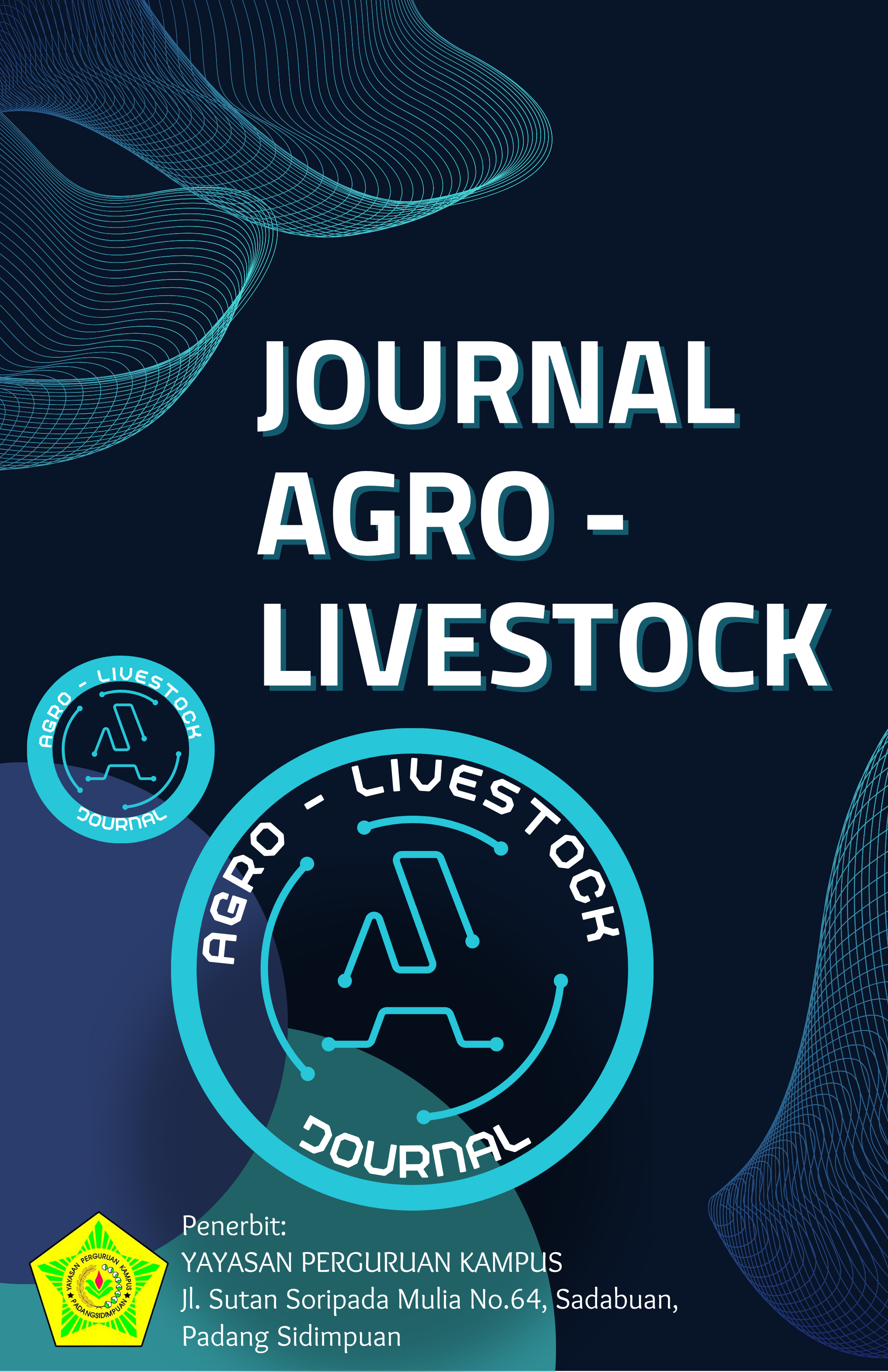Pengaruh Kombinasi Pupuk Kandang Sapi, Arang Sekam, dan Pestisida Teki terhadap Pengendalian Penyakit Moler serta Keragaman Genetik Bawang Merah (Allium ascalonicum L.) Varietas Bauji Generasi Kedua (M2) Melalui Penyinaran Iradiasi Sinar 60CO (Integral Riview)
DOI:
https://doi.org/10.65474/ete59v73Keywords:
shallot, moler disease, cattle manure, rice husk charcoal, nutgrass pesticide, gamma-ray irradiation, Bauji varietyAbstract
Shallot (Allium ascalonicum L.) is a high-value horticultural crop, but its productivity is often hindered by moler disease caused by Fusarium oxysporum. This study aims to examine the effects of a combination of cattle manure, rice husk charcoal, and natural pesticides derived from nutgrass (Cyperus rotundus) on controlling moler disease and to analyze the genetic diversity of the second generation (M2) Bauji shallot variety induced by Co-60 gamma-ray irradiation. The study employed a completely randomized design (CRD) with five treatments, including control (P1), a combination of cattle manure and rice husk charcoal (P2), cattle manure and nutgrass pesticide (P3), all three combined (P4), and the M2 Bauji variety (P5). The results showed that the combination of cattle manure, rice husk charcoal, and nutgrass pesticide (P4) effectively reduced moler disease incidence by up to 65% compared to the control. This treatment also resulted in the highest plant growth and productivity, with an average plant height of 35.2 cm, 15 leaves, and a bulb weight of 120 g per plant. Additionally, the genetic diversity analysis of the M2 Bauji variety revealed genotypes with higher resistance to moler disease and superior productivity, making them potential candidates for new variety development. This study concludes that the combination of cattle manure, rice husk charcoal, and nutgrass pesticide can enhance shallot productivity and resistance to moler disease, while Co-60 gamma-ray irradiation effectively generates genetic diversity for developing superior varieties.
Downloads
References
Dewi, R. S., Hartono, D., & Astuti, D. (2020). Efek Iradiasi Sinar Gamma pada Tanaman Hortikultura. Jurnal Pemuliaan Tanaman, 8(1), 45-50.
Firmansyah, I., & Sumarni, N. (2013). Pengaruh Dosis Pupuk N dan Varietas Terhadap pH Tanah, N-Total Tanah, Serapan N, dan Hasil Umbi Bawang Merah (Allium ascalonicum L.). Jurnal Pertanian, 18(2), 191-199.
Kusuma, H. (2016). Keragaman Genetik dan Konservasi Sumber Daya Alam. Yogyakarta: Gadjah Mada University Press.
Oeliem. (2008). Mutasi Tanaman dan Implikasinya dalam Pemuliaan Tanaman. Jakarta: Penerbit Universitas Indonesia.
Rahmawati, S., Kartika, D., & Santoso, S. (2016). Pengendalian Penyakit Moler pada Bawang Merah dengan Agen Biokontrol. Jurnal Hortikultura Indonesia, 9(2), 45-52.
Risnah, S., Yudono, P., dan Syukur, A. 2013. PengaruhAbu Sabut Kelapa terhadap Ketersediaan K di Tanah dan Serapan K padaPertumbuhanBibitKakao.JurnalIlmu Pertanian. 16(2) : 79-91
Setiawan, A., Hermawan, I., & Andriani, R. (2018). Efektivitas Pestisida Alami dari Teki (Cyperus rotundus) untuk Pengendalian Patogen Jamur. Jurnal Pertanian Organik, 4(3), 123-130.
Plants. Plant Physiology Review, 45(1), 25-42.
Susilo, H., Kurniawan, B., & Wahyuni, R. (2015). Peran Arang Sekam dalam Meningkatkan Struktur Tanah dan Pertumbuhan Tanaman Hortikultura. Jurnal Agronomi dan Tanah Tropika, 6(1), 15-23.
Sutedjo, M. M. (2002). Pupuk dan Cara Penggunaannya. Jakarta: Bumi Aksara.
Syamsuhidayat, S. S., & Hutapea, J. R. (2008). Inventaris Tanaman Obat Indonesia. Badan Penelitian dan Pengembangan Kesehatan Departemen Kesehatan Republik Indonesia, Jakarta.
Downloads
Published
Issue
Section
License
Copyright (c) 2025 Rahmadani, Donal Sihombing (Author)

This work is licensed under a Creative Commons Attribution-ShareAlike 4.0 International License.














